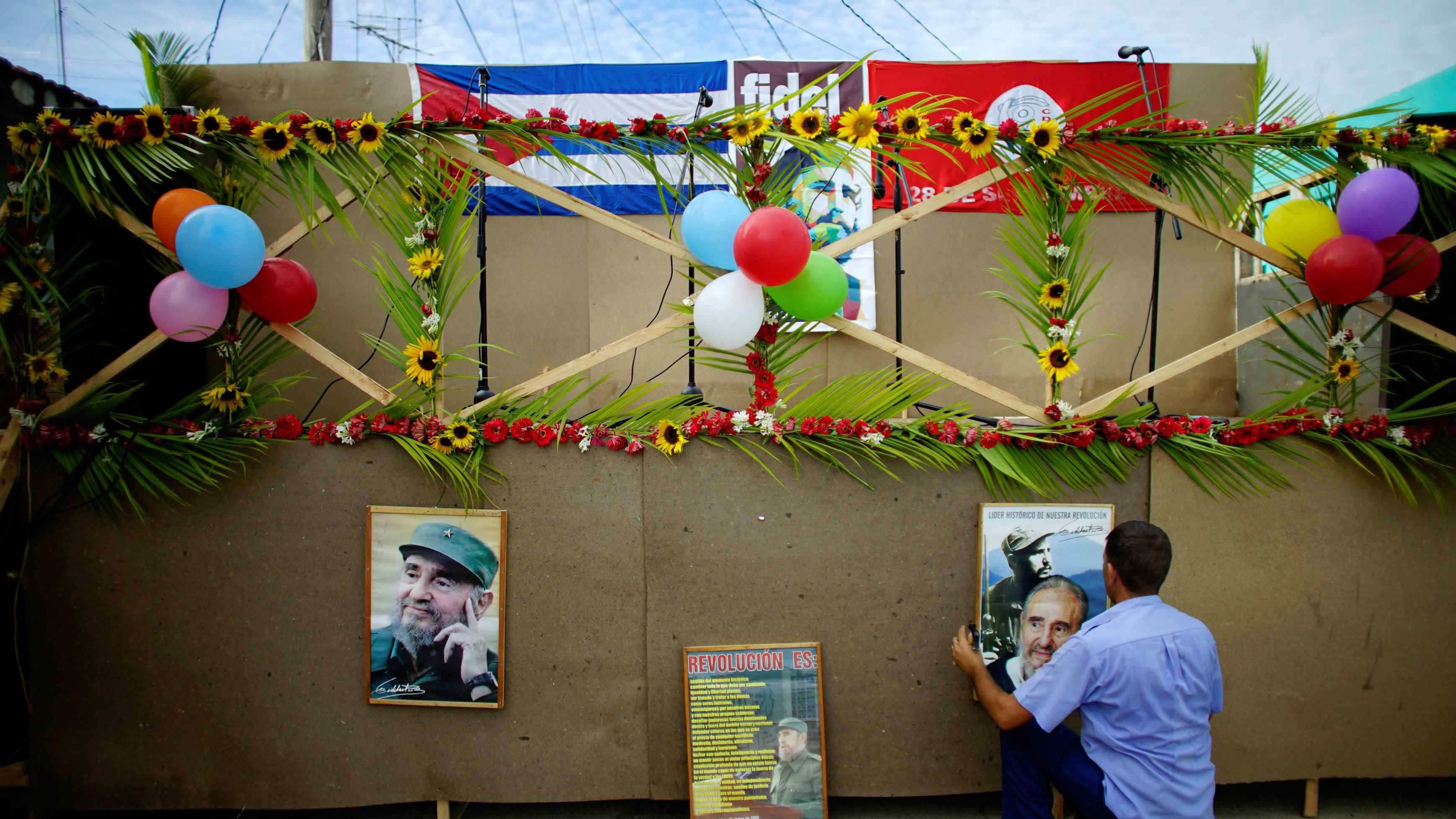Hundreds of Cubans gathered at the University of Havana on Saturday evening to pay tribute and mark the first anniversary of the death of former leader Fidel Castro. He died, age 90, on November 25, 2016.
This was a cultural as much as a political event. A stage was erected at the foot of the giant stairs leading up to the University of Havana, providing a mix of live bands and short speeches, mainly by students.
There were cries of Viva Fidel and Yo Soy Fidel: I am Fidel, I am Fidel, echoed around the campus.
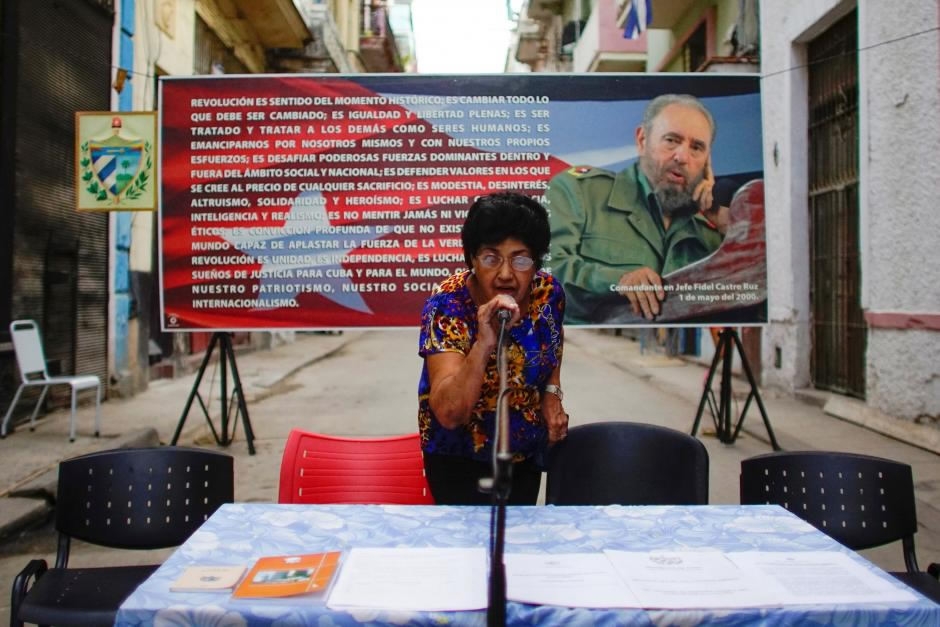
A member of the local electoral commission tests a microphone in front of an image of late Cuban president Fidel Castro on a street where nominations for candidates for municipal assemblies are about to take place, in Havana, Cuba, September 4, 2017. /Reuters Photo
A member of the local electoral commission tests a microphone in front of an image of late Cuban president Fidel Castro on a street where nominations for candidates for municipal assemblies are about to take place, in Havana, Cuba, September 4, 2017. /Reuters Photo
Before the rally we were waiting to see if Fidel’s brother and now President Raul Castro would attend.
In the end, the two leaders who symbolize both the past and the future came to be joined in what was a festive occasion. 87-year-old Jose Ramon Machado Ventura is one of the original revolutionaries who fought under Fidel Castro in the Sierra Maestra mountains.
Today he is the number two in the Cuban Communist Party and one of the most public faces of the government.
Sitting next to him 57-year-old Miguel Diaz-Canel, Cuba’s First Vice President and the man tipped to replace Raul Castro as president next year.
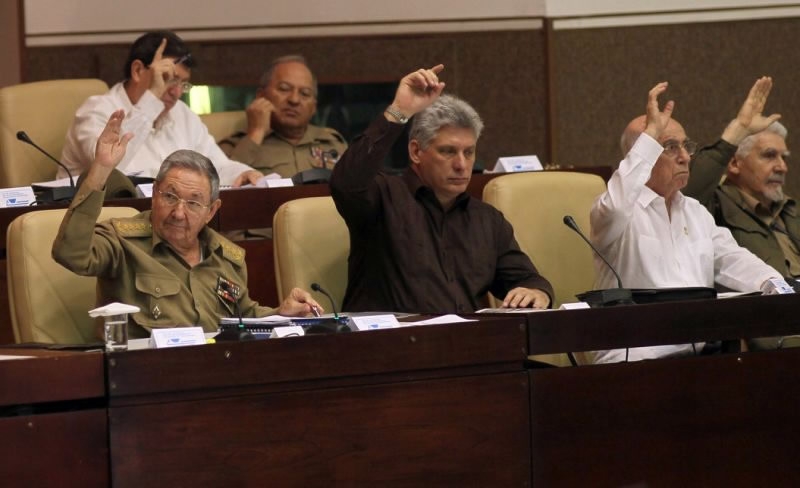
File photo of Cuba's Vice President Miguel Diaz-Canel (center), Cuba's President Raul Castro (left), First Vice-President of the Council of State Jose Ramon Machado Ventura (second from right) and Commander of the Cuban Revolution Ramiro Valdes (right) raise their hands to vote the foreign investment law during an extraordinary session at the National Assembly in Havana, March 29, 2014. /AP Photo
File photo of Cuba's Vice President Miguel Diaz-Canel (center), Cuba's President Raul Castro (left), First Vice-President of the Council of State Jose Ramon Machado Ventura (second from right) and Commander of the Cuban Revolution Ramiro Valdes (right) raise their hands to vote the foreign investment law during an extraordinary session at the National Assembly in Havana, March 29, 2014. /AP Photo
The rally marked the start of a week-long series of events, which will culminate on December 4 with a procession through Cuba’s second city, Santiago, to the Santa Ifigenia cemetery where Castro was laid to rest.
Among Fidel Castro’s dying wishes were that no statues be built of him, nor roads, buildings or parks named after him.
Cuba has honored that request, although this week pictures of Fidel have appeared throughout the city this week.
The University of Havana is where, as a law student, Fidel Castro first became involved in radical politics.
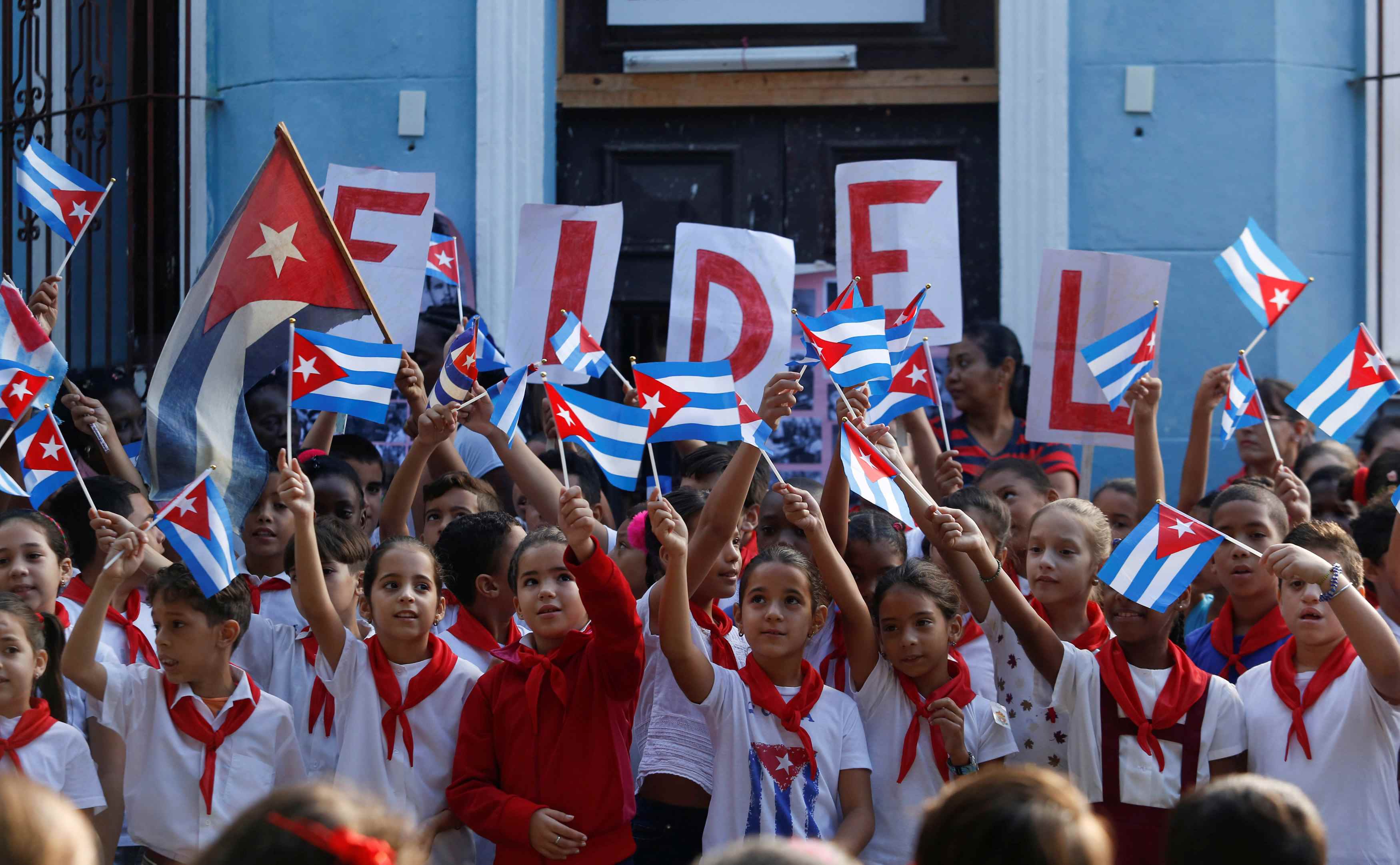
Children perform an act in a school to commemorate the first anniversary of the
death of Cuba's late president Fidel Castro, in Havana, Cuba, November 24, 2017. /Reuters Photo
Children perform an act in a school to commemorate the first anniversary of the
death of Cuba's late president Fidel Castro, in Havana, Cuba, November 24, 2017. /Reuters Photo
It is also the first place that I saw Fidel give a speech in public.
I arrived in Cuba in 2007, the year after he had stepped down due to ill health, passing the leadership onto his younger brother, Raul Castro.
In 2010, having partially recovered, Fidel Castro donned his trademark olive military fatigues and gave an open air public address.
I joined the hundreds of students and other supporters that day as they filled the steps leading up to the University of Havana to catch a rare glimpse of their former leader.
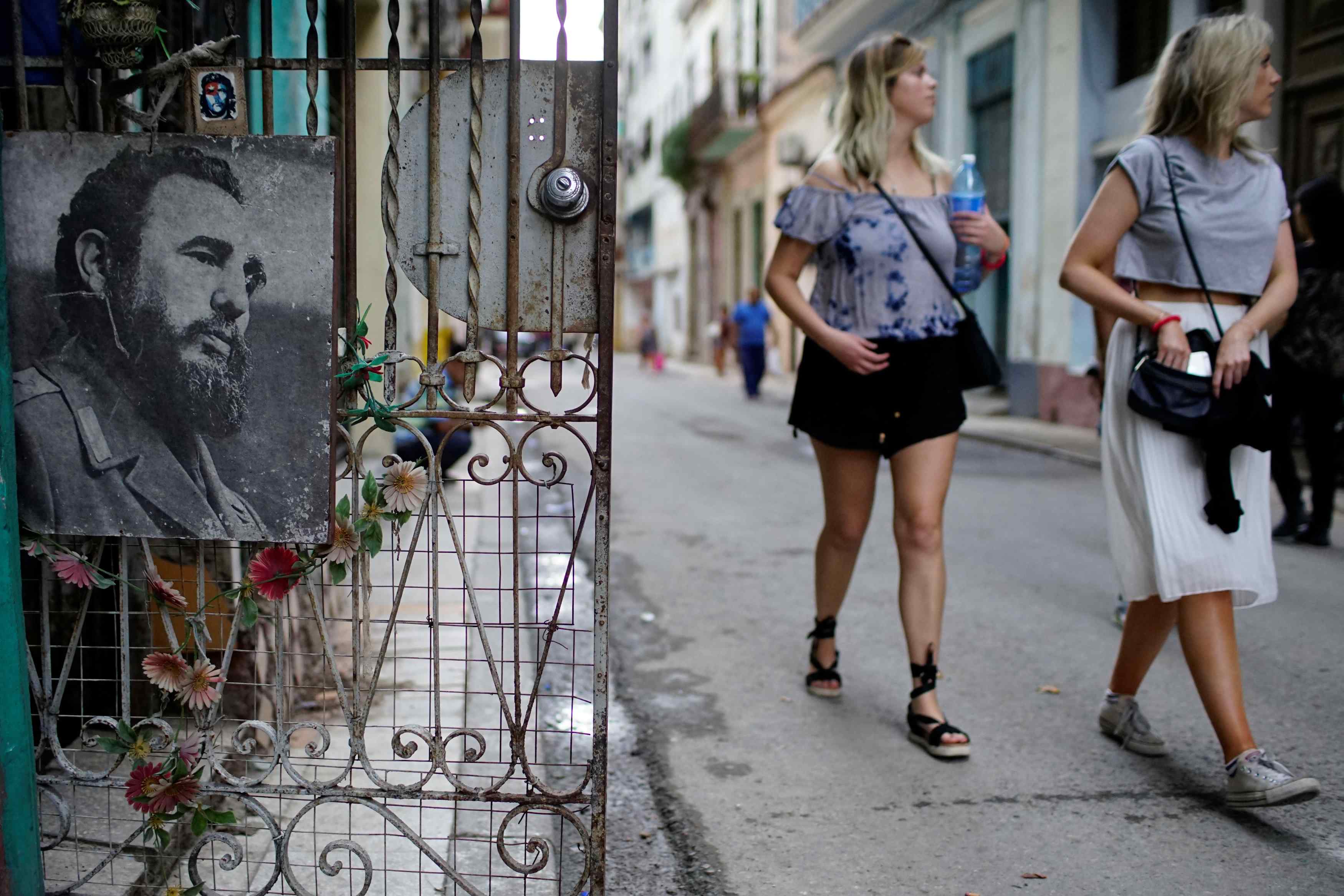
Tourists walk past an image of Cuba's late president Fidel Castro in downtown
Havana, Cuba, November 11, 2017. /Reuters Photo
Tourists walk past an image of Cuba's late president Fidel Castro in downtown
Havana, Cuba, November 11, 2017. /Reuters Photo
This time they had come to honor the man referred to today as the "Historic Leader of the Cuban Revolution."
Fidel Castro ruled Cuba for more than half a century, one of the giant political figures of the 20th century, the last great leader of the Cold War era.
Admired and hated at the same time, he was an icon of the left and a constant thorn in the side of his giant neighbor, the United States.
Today Cuba remains the only Communist-run state in the Western Hemisphere.
There was speculation, especially abroad, about whether his death would lead to a more rapid pace of change.
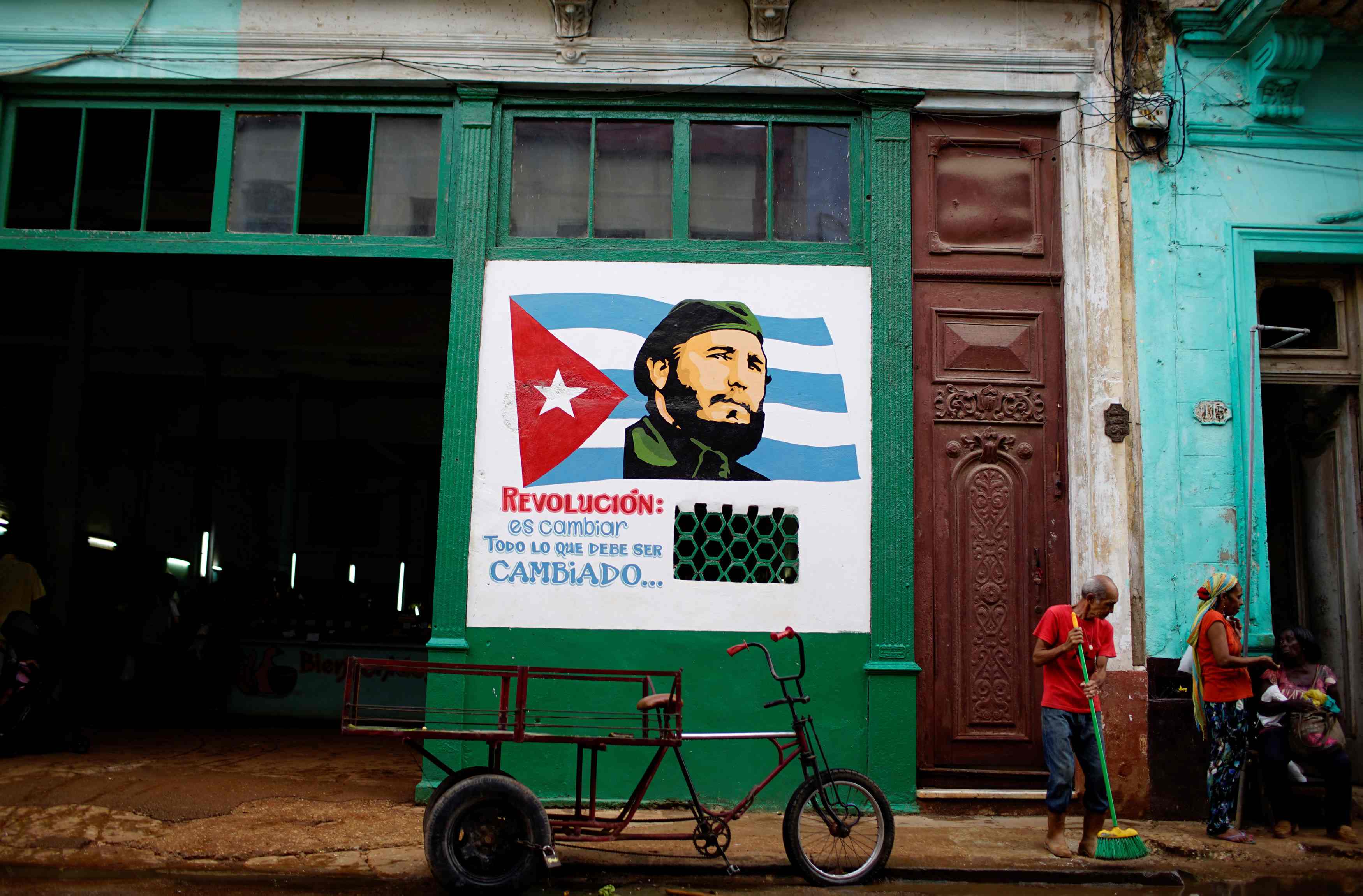
A painting depicting Cuba's late president Fidel Castro which reads in Spanish
"Revolution is to change everything that must be changed" decorates a wall
outside a subsidized state store in
downtown Havana, Cuba, August 24, 2017. /Reuters Photo
A painting depicting Cuba's late president Fidel Castro which reads in Spanish
"Revolution is to change everything that must be changed" decorates a wall
outside a subsidized state store in
downtown Havana, Cuba, August 24, 2017. /Reuters Photo
In many ways it has gone on hold instead. The growth of the private sector appears to have stalled with new restrictions on opening restaurants and lodgings.
There had been talk of electoral reform but that too has stalled.
The biggest changes in Cuba over the past year have come from external factors.
The election of Donald Trump, the economic crisis in Cuba’s key alley Venezuela and the damage caused by Hurricane Irma has all impacted on the island's already struggling economy.
As well as paying tribute to the past, many Cubans are also looking to the future and the start of a political cycle which should result in his brother Raul Castro giving up the presidency.
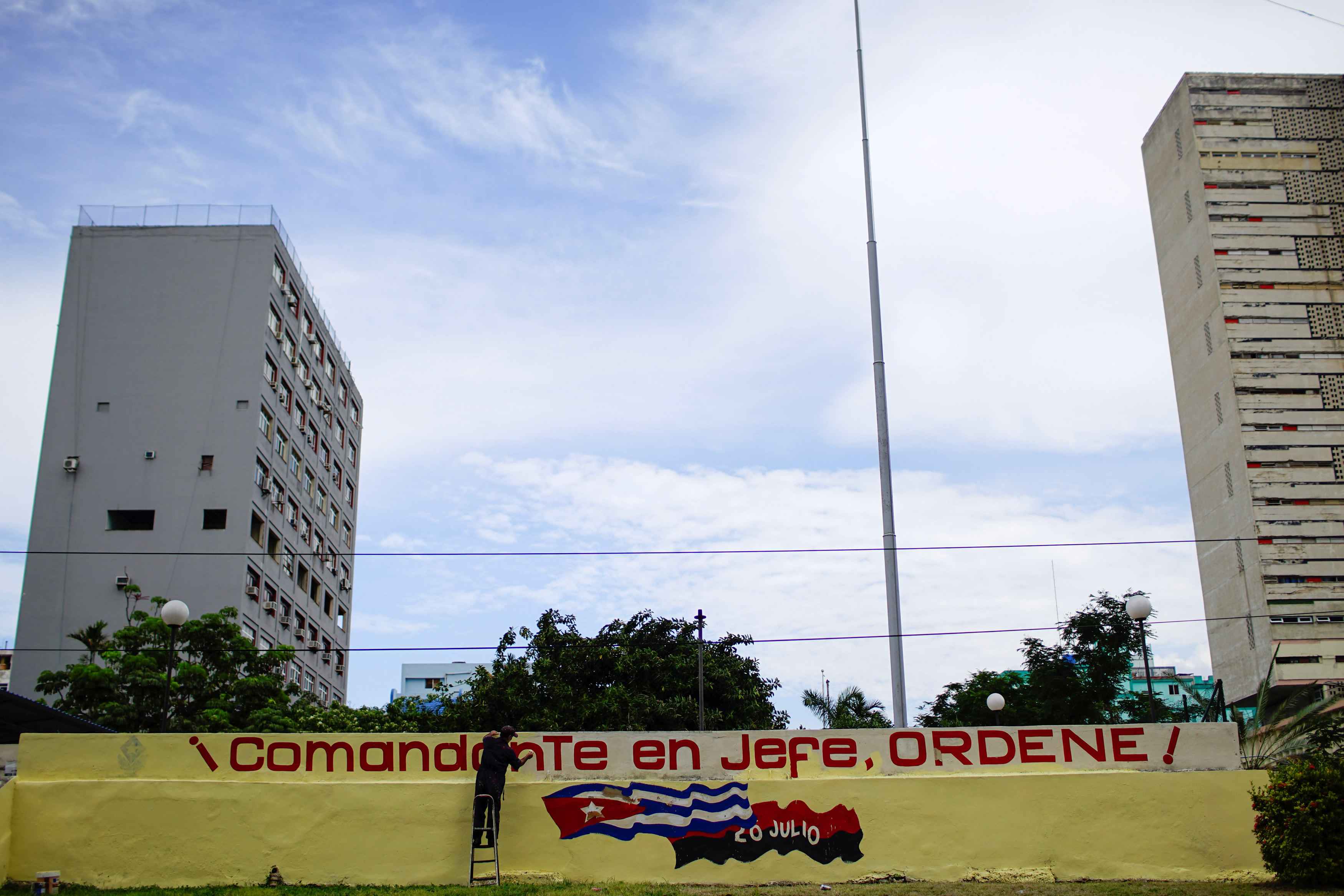
A man paints a message on a wall which reads in Spanish "Commander in chief,
command!" referring to late Cuban president Fidel Castro in Havana, Cuba,
November 23, 2017. /Reuters Photo
A man paints a message on a wall which reads in Spanish "Commander in chief,
command!" referring to late Cuban president Fidel Castro in Havana, Cuba,
November 23, 2017. /Reuters Photo
Municipal elections are taking place on Sunday, the first of three stages that will lead to a new National Assembly of People’s Power, which will meet for the first time in February 2018.
Raul Castro has already announced that he intends to step down. First Vice President Miguel-Diaz Canel is expected to succeed him although it’s not guaranteed.
It could prove a gradual transition, though, as 86-year-old Raul Castro will continue as head of the Cuban Communist Party.

